Read this post on TravelFeed.io for the best experience
.png)
There is no shortage of delicious food in Japan. Every city in the country boasts its own meibutsu, its own local food specialty. Fukuoka is renowned for its inexpensive yatai food stalls, Kyoto reigns supreme on the kaiseki high-end cuisine, Kobe is paradise for meat lover with its Kobe beef while Sapporo and Kinosaki Onsen are the places to go for fresh crab. Yet, one city seems to shine even brighter than the others when it comes to tasty food, so much so that it is believed to be the birthplace of the word “kuidaore”, meaning something along the lines of going broke from eating out.

Osaka is widely considered to be Japan’s foodie capital, even in the face of such profuse competition. The city was nicknamed tenkan no daidokoro, the nation's kitchen, as far back as the Edo period while some food critics even labeled it the world’s foodie capital. Indeed, the capital city of the Kansai region means business when it comes to food. A lot of local specialties originated in Osaka and later spread to the entire country, from the fluffy pancake known as okonomiyaki to the kitsune udon noodles. Quick bites such as takoyaki, crispy balls of octopus, or kushikatsu, fried skewers dipped in brown sauce, also make it easy to enjoy a lot of different food delicacies in one go, effectively proving how easy it can be to eat yourself into bankruptcy.
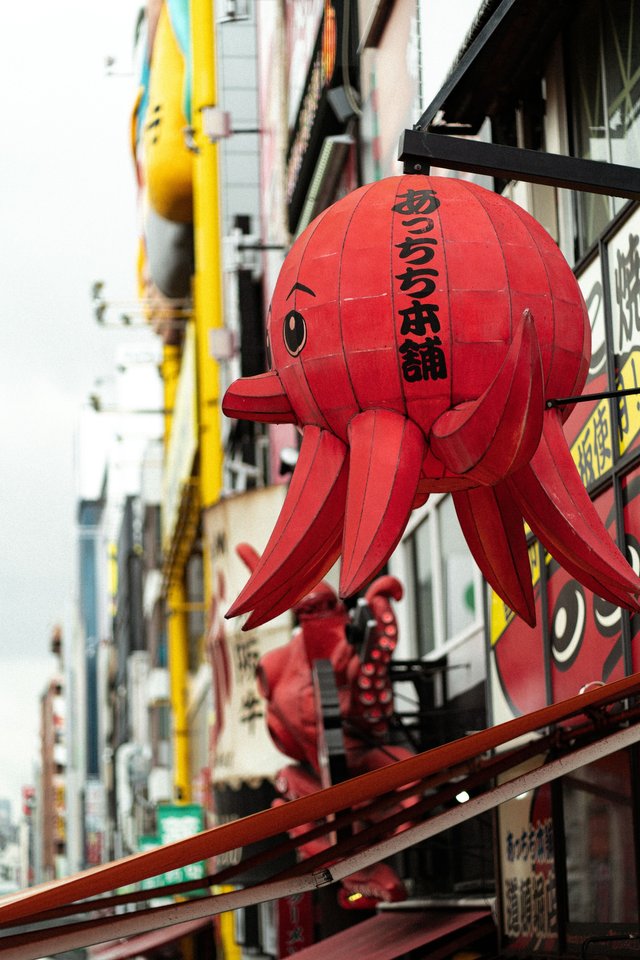
From markets selling fresh seafood products such as the Ichiba Kuromon Market to entire districts bursting with restaurants, street food stalls and over the top street food signs such as the Dotonbori canals and the Shinsekai area, Osaka definitely knows its way around food and offers specialties that can please all taste buds. Here’s our picks for the best dishes to try on a visit to the city and where you can find them.

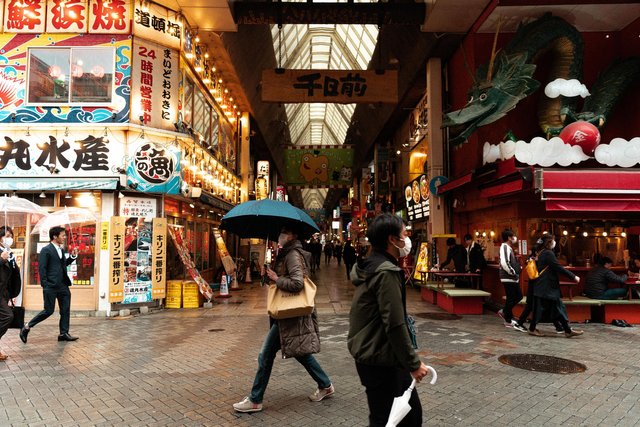
Takoyaki
There can be no Japanese festival without at least a few takoyaki food stalls in the vicinity. This dish, which literally means “grilled octopus”, has indeed long been a locals’ favorite and is considered as the quintessential Japanese street food. It has spread in all major cities of the country, making it easy to forget that this ball-shaped snack came from Osaka in the first place. The recipe is quite simple as takoyaki are made of dough filled with octopus, bits of tempura, green onion and pickled ginger before being topped with brown sauce and mayonnaise and finally sprinkled with dried bonito flakes. Yet, it is this simplicity that makes takoyaki balls so pleasing as they are unusually an inexpensive side dish as well as a popular go for home parties, since most Japanese households own a takoyaki maker.
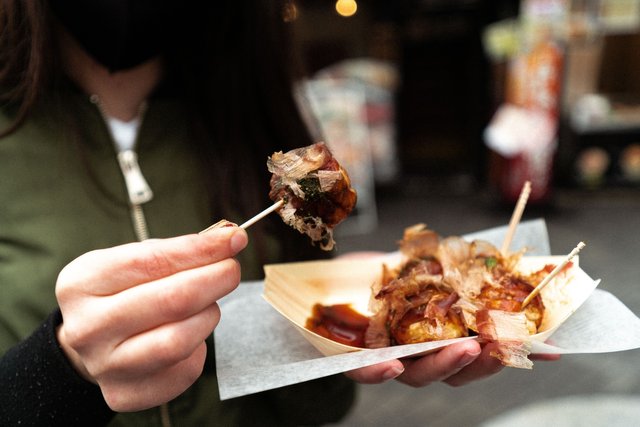
Where: Honke Ootako, Dotonbori.
Being Osaka’s most popular street food, takoyaki can be found virtually everywhere in the city. Some stalls are more famous than others of course, including those which advertise their products with quirky or grand octopus signs. It is therefore hard to single out one place in particular, especially considering most stalls have a distinct feature. When it comes to defining feature though, the Honke Ootako food stall in Dotonbori has an interesting take on its octopus balls as it fills them with big chunks of octopus. The takoyaki there are packed with flavor and come at a commendable size, even though one might regret they are less on the crispy side than other stalls.
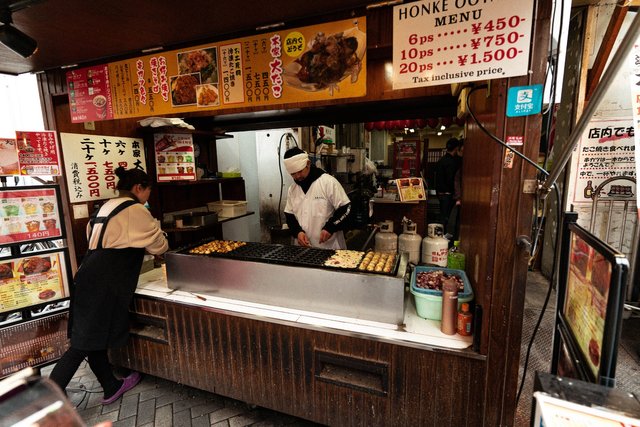
Okonomiyaki
Much like the takoyaki, it has been a while since okonomiyaki has conquered Japan as a whole. This food specialty can be described as a pancake and it consists of a flour batter made of wheat, grated yam, eggs, cabbage and dashi, which is grilled on a hotplate called a teppan. The beauty of the okonomiyaki is in its filling and toppings though as the possibilities are endless. Popular recipes can include everything from a variety of seafood such as shrimp and squid to pork belly, beef, Korean kimchi, cheese or even noodles in the popular modan-yaki take of this classic dish. Toppings made of brown sauce, mayonnaise and bonito flakes complete it, turning it into an explosion of flavors as well as a feast for the eyes. Eating okonomiyaki is also quite the fun experience as customers can sometimes grill their own pancake on a teppan and when they can’t, they can enjoy watching the cook expertly grill it in front of them.

Where: Mizuno, Namba.
If you’re visiting the Namba district, you will quickly notice that some restaurants are so popular there is a big line in front of them at any time of the day. Mizuno is one of those restaurants so well-known that you will definitely have to wait in line for a bit before you enter. Yet, the experience is worth it as they serve some of the fluffiest, tastiest but also fairly reasonably priced okonomiyaki in the city, so good indeed that they earned a Michelin recognition. You won’t cook your food yourself though but the cooks know their business so it’s best to let them delight your taste buds.
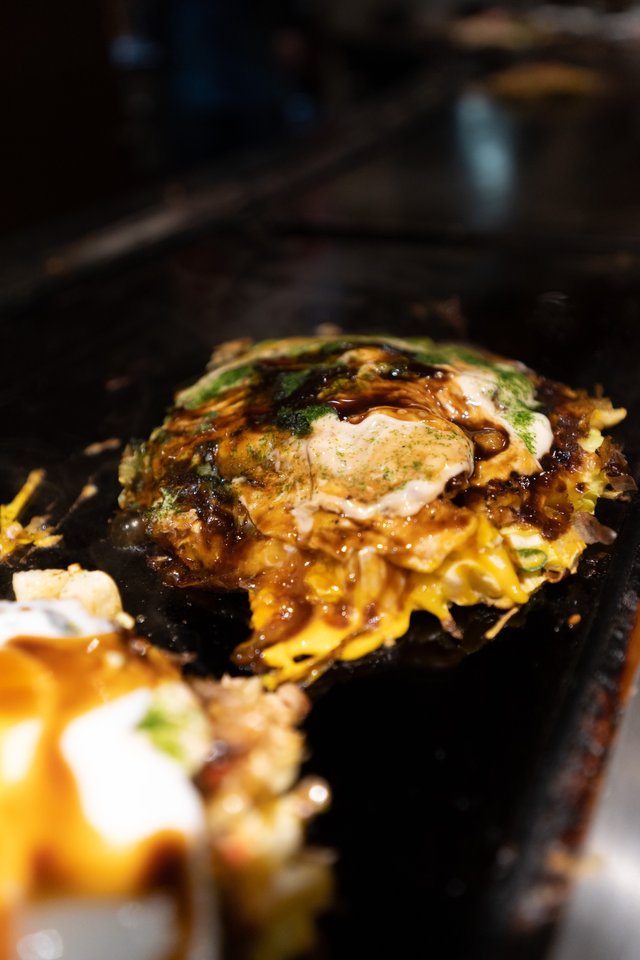
Kushikatsu
Kushikatsu, also sometimes referred to as kushiage, are deep-fried skewered of meat and vegetables dipped in brown sauce. That description alone should suffice to say that kushikatsu is some of the best comfort food there is in Japan. The pool of ingredients is so large that it might be hard to choose which skewers to go for though, from fried tonkatsu pork to bamboo shoot, shiitake mushroom, minced chicken known as tsukune or even mochi rice cakes and the latest trend, avocado. Yet, that might be the occasion to come back to this dish over and over again to uncover new flavors every time. It is also fair to say that, contrary to quite a few dishes in Japan, kushikatsu can be indulged by vegetarians, although they definitely aren’t the healthiest choice around unless you only settle for the cabbage that is served on the side.

Where: Kushikatsu Daruma, Shinsekai.
Kushikatsu are available in all major districts of the city but the Shinsekai area is usually the place to go if you’re craving these tasty skewers. It seems that one in every two restaurants there serves this dish so you will have access to a wide selection but if you don’t know where to go, the Daruma branch is always a safe choice. With an extremely fast service, English menus available and of course, delicious skewers, you can’t go wrong. Plus, there are at least three Daruma restaurants scattered all around Shinsekai.

Kitsune Udon
Contrary to what its name implies, there is no fox involved in this dish. However, it was named kitsune udon according to the popular folk tale implying that foxes are big fans of deep-fried tofu known as aburaage. If so, they would definitely enjoy this dish as kitsune udon is a bowl of thick, chewy noodles dipped in a clear dashi broth and topped with pockets of deep-fried tofu seasoned with sugar and soy sauce. Packed with umami flavor, there is no denying that aburaage is an acquired taste though as its soggy texture can be a bit off-putting at first. This variation on the immensely popular udon recipe is one of the most popular in Japan nonetheless and again, it all started in Osaka.
Where: Imai Honten, Dotonbori.
Dotonbori strikes again, which is no surprise considering the restaurants in the area offer virtually every Japanese specialty ever. Contrary to a lot of the gaudy restaurants around though, Imai Honten is a hole-in-the-wall type of place, which could easily be overlooked. The fact that its sign is only written in Japanese doesn’t help either. It is worth to stop at this quaint restaurant though as it serves some of the best udon dishes in town, from ever so popular kitsune udon to other variations, including an aromatic bowl of duck udon.
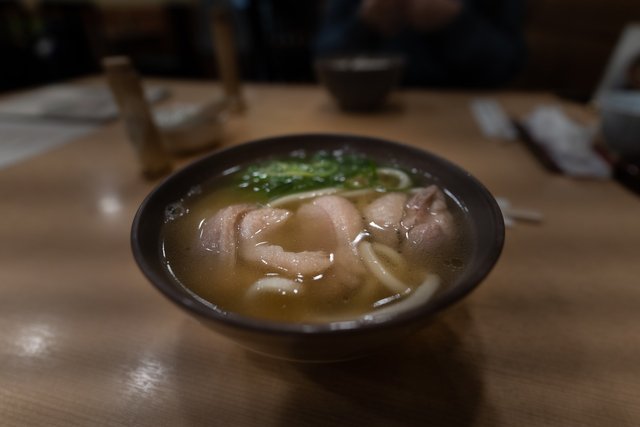

Butaman
First thing first, butaman is not specifically from Osaka. In truth, the word butaman is specific to the region but the dish itself does not vary much from the widespread nikuman, a type of steamed bun which is itself based on the popular Chinese baozi, only it focuses on pork rather than on other types of meat. That being said, butaman steamed buns remain an essential comfort dish to try while in Osaka. Not only are they cheap and easy to eat, they also pack incredible flavors for such a simple street food delicacy. Imagine melt-in-the mouth pork in a warm, fluffy bun, in the face of a cold winter and you’ll picture how soothing this dish can be. Butaman can be found in convenience stores all over the country, all of which offer some original takes on the initial recipes such as curry-flavored buns or even sweet buns, but it’s better to go for a restaurant specializing on this dish to enjoy the full experience.
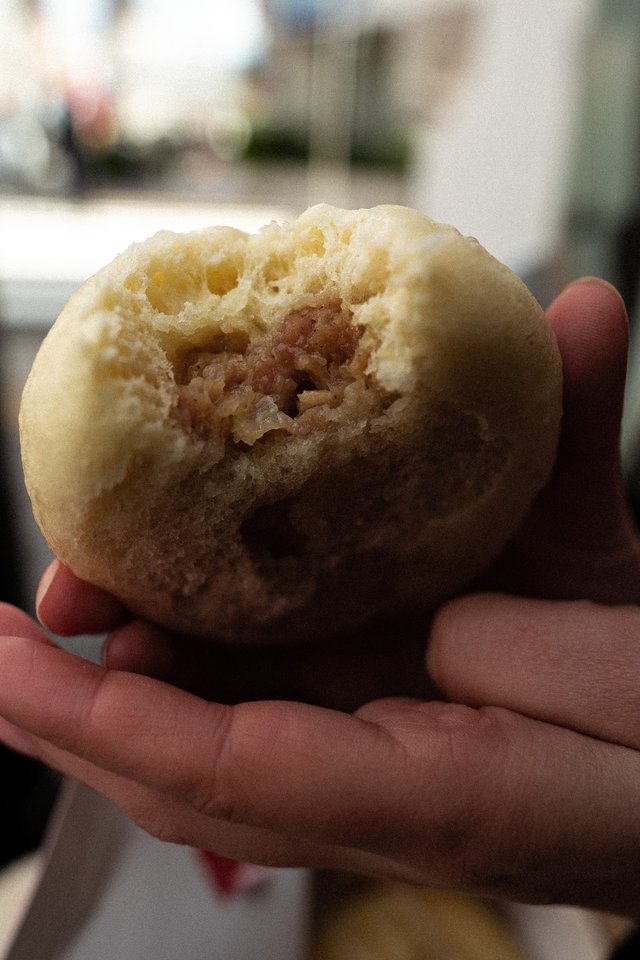
Where: 551 Horai, Namba.
551 Horai advertises its products quite extensively, from simple ads in the street to ads on multiple vending machines. Their marketing strategy worked wonders on us though and we can say theirs were the best butaman we ever had. First of all, the size of the bun was extremely pleasing but what made them unforgettable was their filling of tender pork and onions, creating a perfectly balanced sweet and juicy flavor. 551 Horai boasts many shops throughout the city, including some iin the biggest train stations, meaning they’re easy to pack on a train ride.

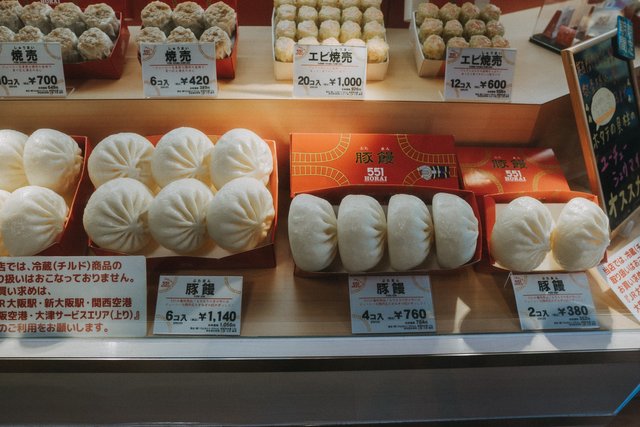
With its vibrant street food scene and mouth-watering food specialties, Osaka well deserves to be nicknamed Japan's kitchen and it most definitely belongs on every food lover's travel wish list.
View this post on TravelFeed for the best experience.
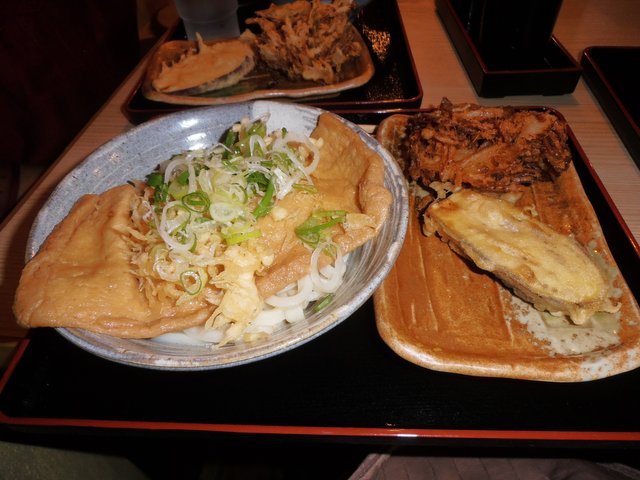
Great write-up and the food looks so appetizing.
Downvoting a post can decrease pending rewards and make it less visible. Common reasons:
Submit
Thank you for your comment! I can confirm the food is incredibly tasty. ;)
Downvoting a post can decrease pending rewards and make it less visible. Common reasons:
Submit
Congratulations @haydae! You received the biggest smile and some love from TravelFeed! Keep up the amazing blog. 😍 Your post was also chosen as top pick of the day and is now featured on the TravelFeed.io front page.
Thanks for using TravelFeed!
@invisusmundi (TravelFeed team)
PS: You can now search for your travels on-the-go with our Android App. Download it on Google Play
Downvoting a post can decrease pending rewards and make it less visible. Common reasons:
Submit